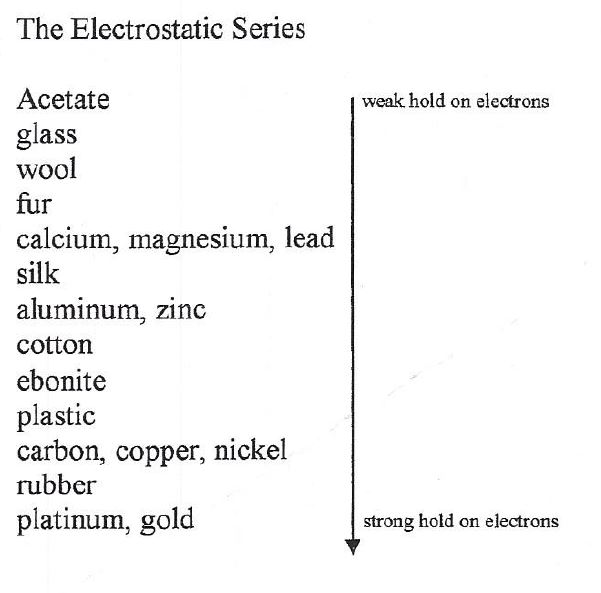The Electrostatic Series
The list shown in the diagram below is an electrostatic series.
This list is based on the fact that some materials tend to lose or gain electrons more easily than others. Remember it is the "excess" electrons that "move" on the surface of materials or within the materials themselves that determine their charge.
In the list below, listed at the top are materials that that are more likely to lose electrons as friction is applied to them.
At the bottom are listed materials that attract a negative charge when friction is applied to them.
Another name for the property of an object that descriobes its likelihood to either attract or repell electrons is known as Electron Affinity, as you will study in Chemistry.
A loss of electrons by an object means the object will become posiitvely charged while a gain of electrons will result in the object becoming negatively charged.

Question: If wool and glass are rubbed together which will become negativey charged and why?
Answer: In the Electrostatic Series, the wool is listed below the glass and therefore tends to hold on to electrons more easily than the glass. Whe the two materials are rubbed together the glass will lose "free" electrons more easily than the glass and the wool will gain them. As a result, the glass will become positively charged and the wool negatively charged.


